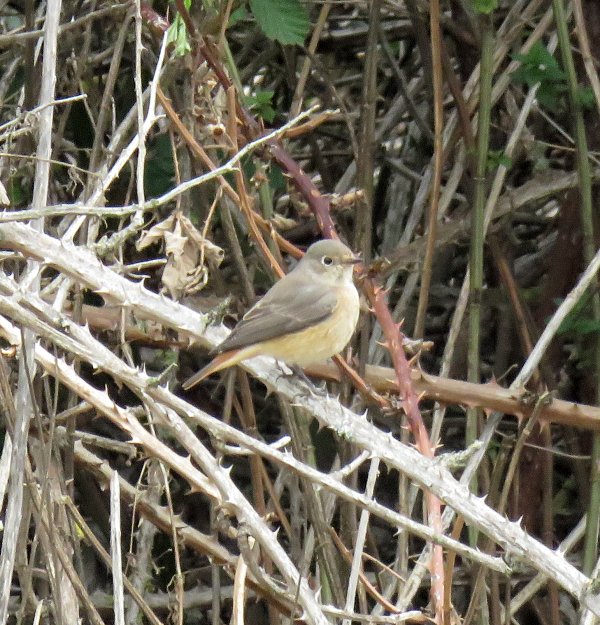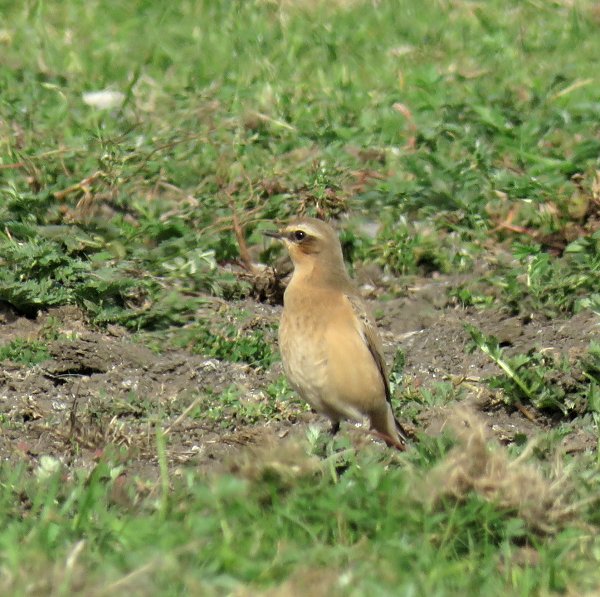Since my last post the good autumn passage has continued. For a couple of weeks Burgess Field was on fire with two more Redstarts and five more Spotted Flycatchers. That makes four Redstarts in total and eight Spotted Flycatchers which are pretty amazing totals by Port Meadow standards.
 |
| One of Three Spotted Flycatchers that turned up one lunchtime. At one point they are all in the same tree |
 |
| The fourth Redstart to grace Burgess Field this autumn |
It does rather seem that this passage has passed as Burgess Field has been decidedly quiet for the last week and a bit. Yellow Wagtail numbers have taken a nosedive as well. We peaked somewhere in the mid twenties in terms of numbers but the last week or so there have been just three birds at most. We've had a few Lapwing and Golden Plover starting to assemble on the Meadow so far. In addition there was a Sedge Warbler along the river (sadly this species is pretty rare on the Meadow these days) and a single Tufted Duck on the river for one afternoon.
Ever since the large number of Cattle Egrets starting congregating at Otmoor in the late summer, I have been hoping that some would disperse to Port Meadow as they did last year. Sadly this doesn't seem to have happened. There was a single bird briefly in amongst the livestock on the 7th but that's been it. At least we've managed to get a genuine on-the-patch tick for this - up until now our year tick was done by extreme-scoping all the way to the Wytham cattle fields with only the observer actually being on the patch. A regular flock is now being seen over at Wytham so it looks like they have all moved over there for the winter now.
 |
| Our one brief Cattle Egret |
Talking of Egrets, we've had a couple more Great White Egret sightings. These are presumably the Cassington GP birds popping over to the Meadow for a visit. One spent a couple of hours at Wolvercote Lake one morning and another was seen on the river again. We've had a few more Wheatear sightings with one at the north end of the Meadow and then two more which have lingered at the southern end on the dried up flood area.
 |
| Wheatear |
Despite my fretting about the state of the year list we have managed to rack up quite a few more ticks. Firstly a Marsh Tit was seen by Phil Barnett in a Hawthorn near the Aristotle Lane entrance briefly before moving off. Presumably this is a bird dispersing from Wytham Wood where they breed. Secondly, Steve Lavington has a brief Stonechat sighting as one flew into the allotments. I often wonder what gems get missed within the allotment area! Finally, Phil Barnett found another goody in the form of a juvenile Grey Plover that spent the afternoon on the Meadow. There's been a flurry of sightings nearby at Farmoor so it was good that we managed to get this just about annual species on the list. With the early demise of the floods I was sure that we'd missed it this year.
 |
| The Grey Plover, courtesy of Ben Sheldon |
Looking ahead, with the continued drought there's no sign of the floods returning any time soon. So I would continue to expect slim pickings on the Meadow. However, we've managed to do OK so far this autumn without any water so it's worth staying optimistic.



%20TGs%2029th%20August%202022.JPG)

%20TGs%2014th%20August%202022%20(4).JPG)